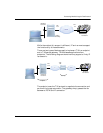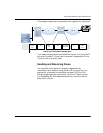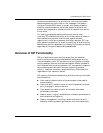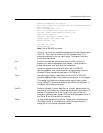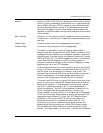
Understanding the SIP Protocol
November 2009 246
SIP is not a vertically integrated communications system. SIP is
rather a component that is used with other IETF protocols to build a
complete multimedia architecture. Typically, these architectures
include protocols such as the Real-time Transport Protocol (RTP)
(RFC 1889 [28]) for transporting real-time data and providing QoS
feedback, the Real-Time streaming protocol (RTSP) (RFC 2326 [29])
for controlling delivery of streaming media, the Media Gateway
Control Protocol (MEGACO) (RFC 3015 [30]) for controlling
gateways to the Public Switched Telephone Network (PSTN), and
the Session Description Protocol (SDP) (RFC 2327 [1]) for describing
multimedia sessions. Therefore, SIP should be used in conjunction
with other protocols in order to provide complete services to the
users. However, the basic functionality and operation of SIP does not
depend on any of these protocols.
SIP does not provide services. Rather, SIP provides primitives that
are used to implement different services. For example, SIP can
locate a user and deliver an opaque object to the current location. If
this primitive is used to deliver a session description written in SDP,
for instance, the endpoints can agree on the parameters of a session.
If the same primitive is used to deliver a photo of the caller as well as
the session description, a “caller ID” service is easily implemented.
As this example shows, a single primitive is typically used to provide
several different services.
SIP does not offer conference control services such as floor control or
voting and does not prescribe how a conference is to be managed. SIP
is used to initiate a session that uses some other conference control
protocol. Since SIP messages and the sessions they establish can
pass through entirely different networks, SIP cannot, and does not,
provide any kind of network resource reservation capabilities.
The nature of the services provided make security particularly
important. To that end, SIP provides a suite of security services,
which include denial-of-service prevention, authentication (both user
to user and proxy to user), integrity protection, and encryption and
privacy services.
SIP works with both IPv4 and IPv6.




